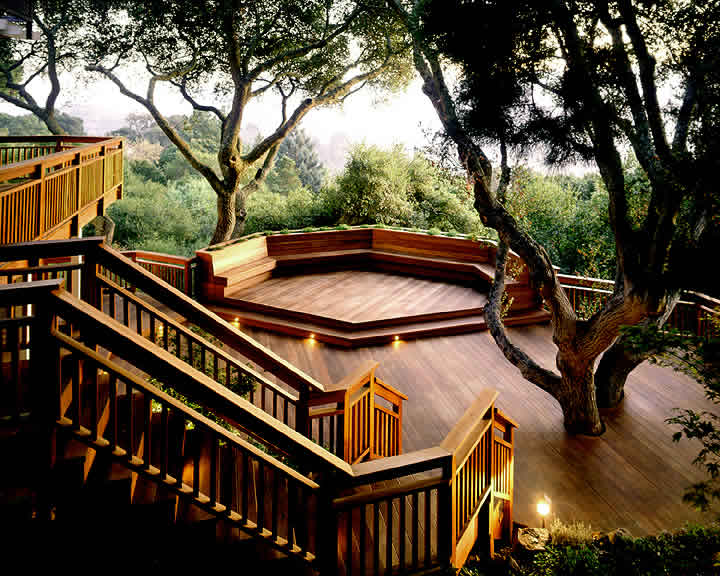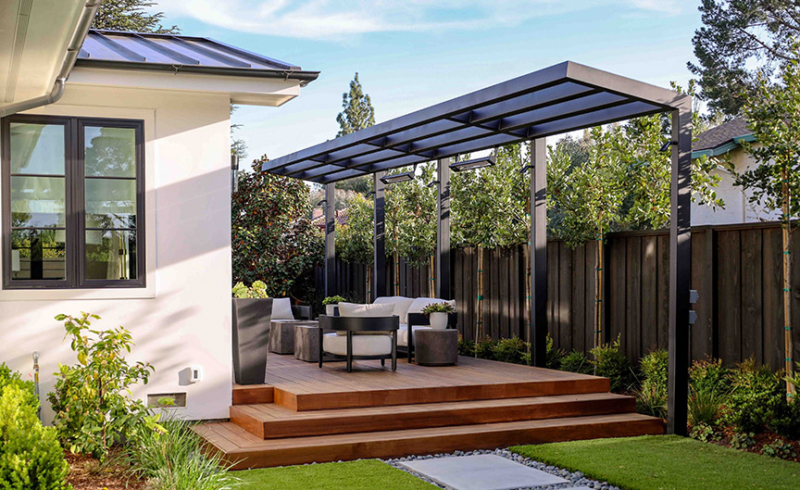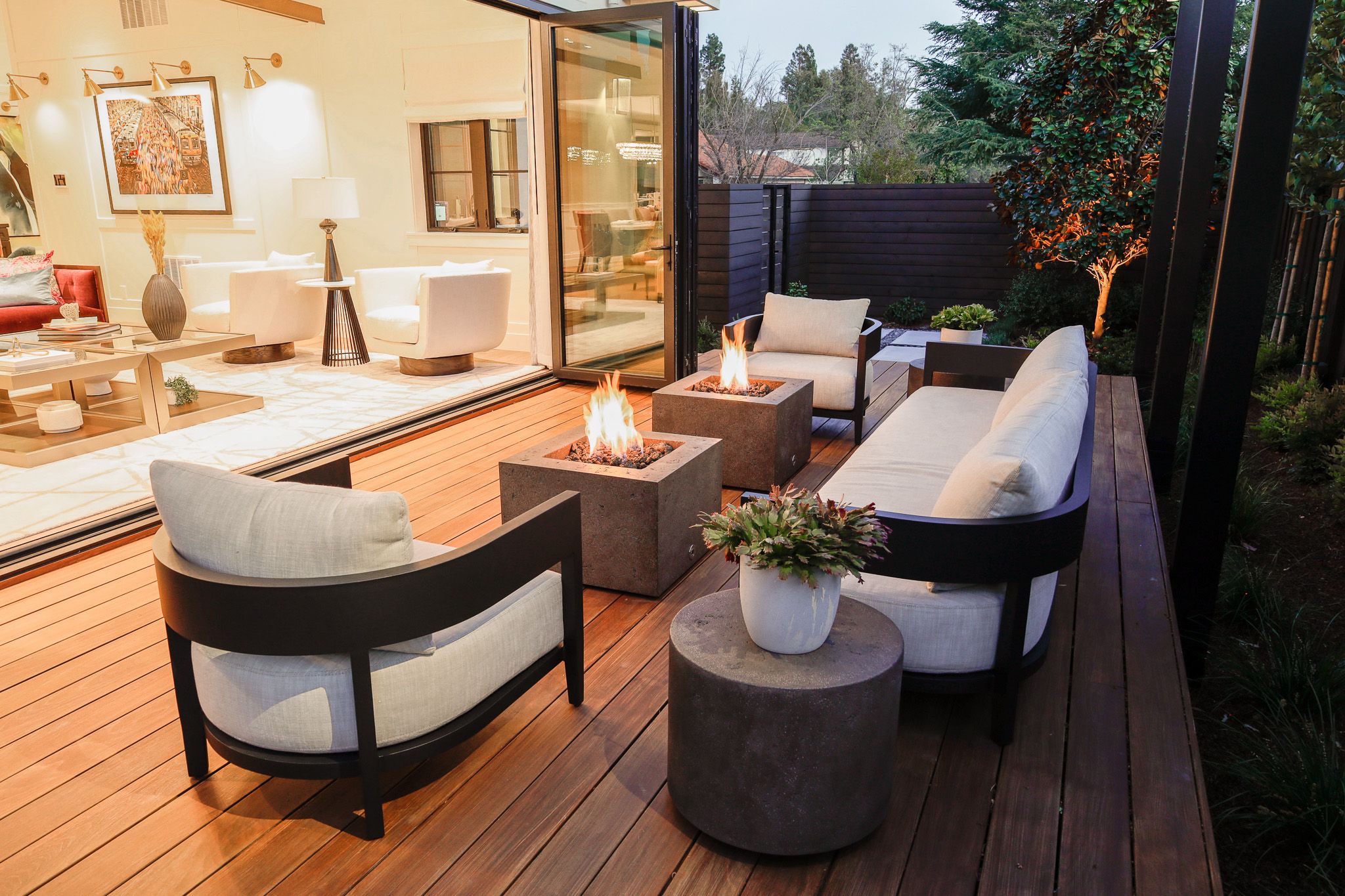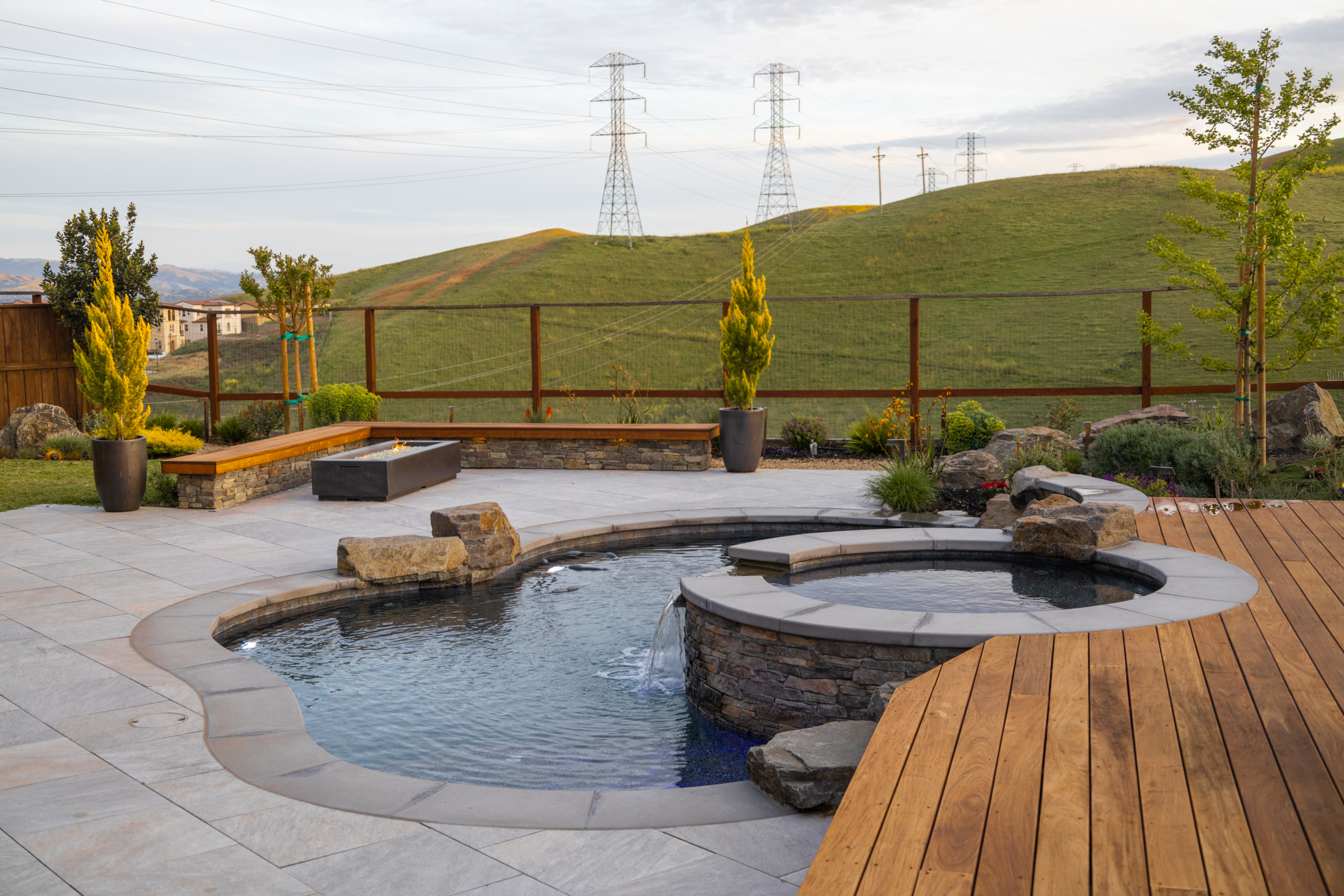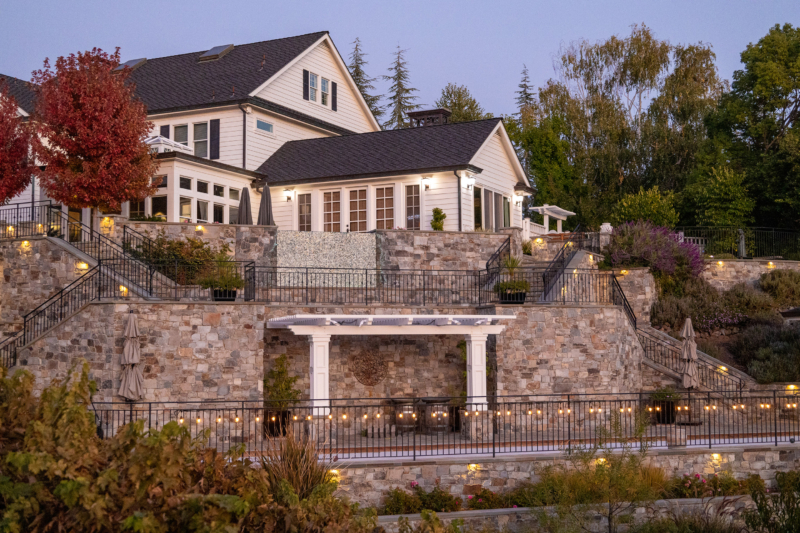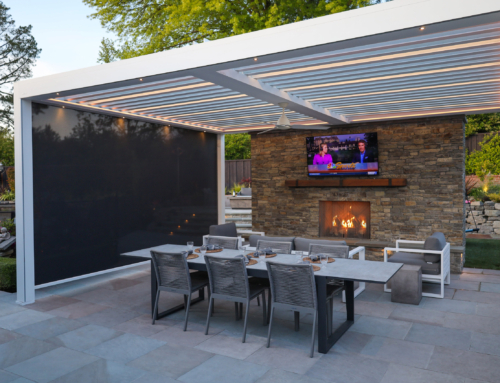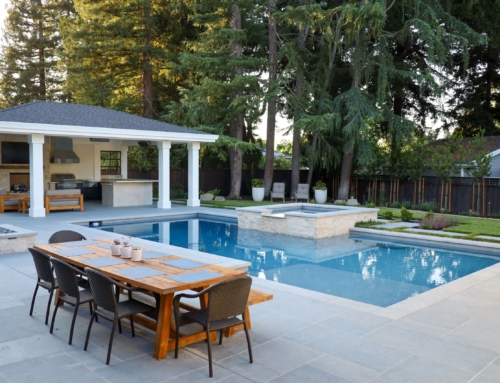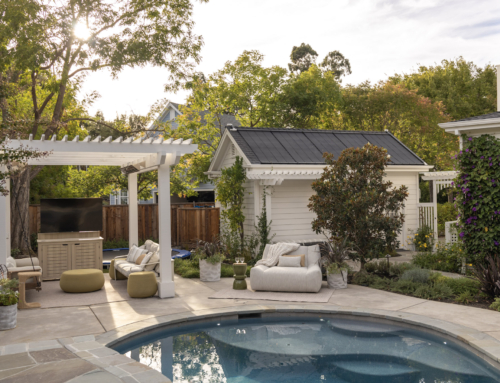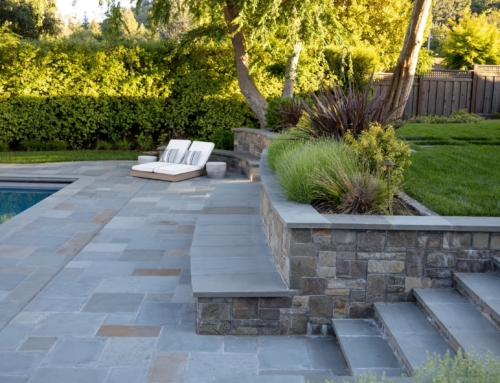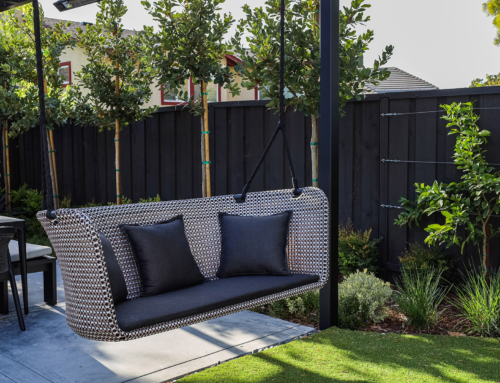On Decks
A Montgomery Robbins, Inc. deck on the cover of Sunset’s ‘Complete Deck Book’
For a moment here in California, it seemed like decks were going out of style. Wood was being replaced with stone and concrete terraces, as homeowners began to work with the contours of their land and defy the style fads of the 80 and 90’s (Redwood lattice, anyone?) While sustainable design leads us to explore alternatives to rare woods, we maintain that the deck is alive and well. In fact, it’s being reinvented in some pretty exciting ways.
Gravity-Defying Decks
The deck shown above will always be a pride and joy for us. On this mountainous site without a flat spot in sight, a deck was really a must in order to create outdoor living space. Because our clients were far from boring, we knew the deck had to reflect the charm of their home and the personality that they would bring to the space. Working with octagonal geometry and incorporating the existing trees into the design made this deck anything but ordinary. As for the structure beneath, a deceptively strong foundation and reinforced cantilever allows it to appear to defy gravity as it “floats” over the canyon. When building a deck on a steep slope, a civil engineer is sometimes involved to ensure all construction will be strong enough to support it. We would say it’s worth the extra effort for a result like this!
Low Decks
On the complete other end of the spectrum, low decks are making a real comeback as a landscape feature with a modern bent. Not only can this style provide a cool transition between house and landscape, even mimicking an interior hardwood floor for a seamless walk-out feel, it can also create added interest by bringing a new material onto the ground plane.
How low can you go? Contemporary flush decking is ultra-hip and totally elegant. This style of deck is a new favorite way to incorporate wood into the landscape. This is because the decking is lifted up on joists, allowing rainwater to flow underneath. A special drainage system also ensures that water will not become trapped under the deck where it could cause rot. Using matching wood elsewhere in the landscape, as we did in the secondary deck, allows for a cohesive feel throughout.
Decking: Wood & Wood Alternatives
So if you are building with wood, what type do you use? Multiple factors can contribute to this choice, including aesthetics, durability, and sustainability. Redwood and cedar have been long-running classics due to their beauty and resistance to rot, but these woods today often aren’t what they used to be. Old-growth wood, with the greatest strength and rot resistance, is no longer available due to overharvesting. Tropical hardwoods, like Ipe, are gorgeous and last forever! But again, overharvesting and rainforest habitat loss are no joke. One popular solution is finding old-growth wood reclaimed from old buildings and barns. This recycled wood is amazingly durable and has real charm. If you prefer new wood, we get it. Just search for wood certified by the FSC (Forest Stewardship Committee) for sustainable harvest.
What’s the deal with wood alternatives? To tell the truth, composites (wood fiber bonded with recycled plastic) have come a long way! Every year, companies like Trex awe us with their new offerings. There are even some interesting new products on the market made with bamboo. The deck above is built from EPI wood. It also serves as overflow seating, as it is built with the perfect sitting height in mind.
Railings & Banisters
If you’re going to have a deck more than a couple of feet off the ground, a railing is nearly always mandatory. But what if you want the effect of seamlessness with the landscape instead of an obstruction of your view? Cable-wire railings are the latest look that has transitioned from neomodern to versatile. It still would look odd next to a historic house, but basically anywhere else it’s a classy alternative to wooden slats. Wide wire mesh (often sold as Hog-wire) is another favorite of ours for more traditional homes. Glass and plexiglass are other more contemporary solutions for a breathtakingly open feel. These systems can be custom-built or purchased in modular units. Who knows what they will come out with next!
Stairs
If you do need a staircase on your deck, there are many varied ways of building one. Instead of a single flight of steep steps, consider stairs interrupted by landings or even by changes in direction. Not only are they safer, but they also create a more interesting experience and can become a design feature in and of themselves. Interfacing with stone or another material, as in the image above, can also create a unique look and help your stairs navigate tight spaces.
The Montgomery Robbins team enjoys the constant challenge of designing site-specific custom landscapes. Curious about our full range of services? Contact our office for information and consultation booking, and let’s talk possibilities!

